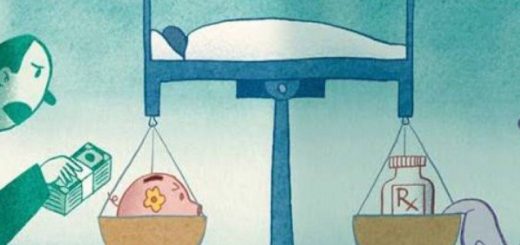Intergalactic Planetary Cancer Therapy
 ‘Therapeutic thinking has been influenced by the doctrine of the mutant cell as the initiator of cancer, leading to the idea that only things which kill the cancer cells can cure cancer. But when the body stops activating the processes of inflammation and growth, normal processes of tissue repair have an opportunity to eliminate the tumor.’ Ray Peat PhD
‘Therapeutic thinking has been influenced by the doctrine of the mutant cell as the initiator of cancer, leading to the idea that only things which kill the cancer cells can cure cancer. But when the body stops activating the processes of inflammation and growth, normal processes of tissue repair have an opportunity to eliminate the tumor.’ Ray Peat PhD
Breast cancer is the most common cancer among women and the second leading cause of cancer-related deaths. Estrogen, radiation and chemicals in the air, food and water (which promote estrogen) are leading causes of breast cancer.
The “official” hypothesis states that cancer results from genetic mutations that promote tumour development, directing attention towards conventional treatments revolving around surgery, radiation and chemotherapy.
Unfortunately, at the same time, attention is diverted away from the significance of factors that can damage the tissue environment surrounding a tumour, which is known to interfere with the proper regulation of cellular function.
The polyunsaturated fats (PUFAs), ionising radiation, various toxic chemicals (for example, chlorinated hydrocarbons), and other environmental and dietary factors can powerfully interfere with thyroid function and cause a rise in the stress-promoting inflammatory substances, including estrogen, cortisol and serotonin.
The inflammatory, estrogen-dominant stress state gets demonstrated to encourage an extracellular environment that has the potential to interfere with normal cell behaviour. This environment can get referred to as a kind of internal cancer-promoting environment.
Ongoing exposure to stress (including emotional distress or sugar restriction) promotes cortisol (and other stress substances) and releases the PUFAs out of storage. Both cortisol and PUFAs promote estrogen and inflammation, as well as stress and cellular dysfunction in general, increasing the risk that cancer will grow and spread.
PUFAs (and their toxic breakdown products) also interfere with proper blood sugar regulation and cause insulin issues, another factor known to be a promoter of estrogen.
This high estrogen inflammatory condition can damage cholesterol, interfere with the production of cholesterol, and with the conversion of cholesterol into the protective hormones (pregnenolone, progesterone and DHEA), all of which play an essential part in protecting against harm from estrogen and inflammation, and supporting healthy cellular function.
Stress, estrogen, inflammation and PUFAs, all promote serotonin excess, and serotonin gets shown to be associated with cancer development and spread. Serotonin and inflammation stimulate estrogen production.
Maintaining a regular supply of fuel, protein, and other nutrients (including sodium, calcium, magnesium and potassium) helps to protect against stress and inflammation. And it improves thyroid and liver function, which play a fundamental role in limiting exposure to serotonin and estrogen. So in addition, it assists with proper tissue organisation and healthy cellular regeneration.
On numerous occasions, a healthy tissue environment has gotten experimentally demonstrated to help cancer cells revert to normal behaviour.
A diet restricting fats (especially PUFAs), including protein from milk, cheese and gelatin, with sugar from sweet ripe, juicy fruits, fruit juice, white sugar and honey, is one approach to improving the function of the organism as a whole. And to avoid the encouragement of an inflamed, estrogenic tissue microenvironment that gets shown to lead to breast cancer.
Several things, including aspirin, thyroid supplements, pregnenolone and progesterone, red light therapy and glycine, can support metabolism and protection from degeneration and disease, including cancer. Also included are vitamins E and A and coffee and caffeine.
Insufficient fuel supply and accessibility (as well as protein and vitamin deficiencies) can reduce the beneficial effects of pro-metabolic therapies, sometimes triggering a stress response.
If you like what I have to say and want more information (including lots of studies) showing how the promoters of stress and inflammation interfere with regular cellular activity, please check out some of my other articles, including Welcome To The Cancer Environment and The Anti-Cancer Articles eBook.
Copyright 2021, by Dan M @ CowsEatGrass. All rights reserved (except for quotations and images having their own protected copyrights). This copyright protects author-publisher Dan M’s right to future publication of his work in any manner, in any and all media — utilizing technology now known or hereafter devised — throughout the world in perpetuity. Everything described in this publication is for information purposes only. The author-publisher, Dan M, is not directly or indirectly presenting or recommending any part of this publication’s data as a diagnosis or prescription for any ailment of any reader. If anyone uses this information without the advice of their professional health adviser, they are prescribing for themselves, and the author- publisher assumes no responsibility or liability. Persons using any of this data do so at their own risk and must take personal responsibility for what they don’t know as well as for what they do know.
See more here
#estrogenetic
#sugarfeedsthyroid
#pufaispoison
Image: World Famous: “Alexis’ Wish”



